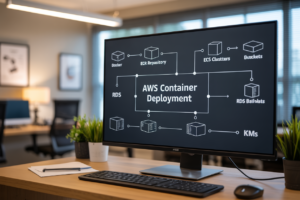Ever stared at your Databricks bill and wondered “who the heck is using all these resources?” You’re not alone. Data teams everywhere are struggling to attribute costs across departments, projects, and individual users.
That’s why tracking usage in Databricks with tags isn’t just nice-to-have—it’s essential for maintaining your sanity and your budget.
Tags give you the power to see exactly who’s consuming what resources, making cost attribution straightforward instead of a monthly mystery. With proper Databricks usage tracking, you’ll transform chaotic spending into clean, actionable data.
The difference between tagged and untagged resources is like night and day. One gives you clarity and control. The other? Well, that’s just throwing money into a black hole and hoping for the best.
But how exactly do you implement an effective tagging strategy without driving your team crazy?
Understanding Databricks Resource Tags
What are Databricks tags and why they matter
Tags in Databricks are like name badges at a conference – they identify who’s using what. They’re key-value pairs attached to resources, helping track usage across teams and projects. Without them? Good luck figuring out which department ran up that massive compute bill last quarter.
Key benefits of implementing a tagging strategy
Ever tried finding a needle in a haystack? That’s cost tracking without tags. A solid tagging strategy delivers crystal-clear visibility into who’s using what resources, enables accurate chargeback to departments, simplifies compliance reporting, and helps identify optimization opportunities before costs spiral out of control.
Different types of tags available in Databricks
Databricks offers several tag flavors to suit different needs. Resource tags stick to clusters and jobs, while notebook tags track individual analyses. Workspace tags organize at a higher level, and automation tags get applied through policies. Custom tags? They’re your best friend for department-specific tracking that actually makes sense to your finance team.
Setting Up an Effective Tagging System
Setting Up an Effective Tagging System
A. Planning your tagging taxonomy
Creating an organized tagging system isn’t rocket science, but it requires thought. Start by identifying your tracking needs—who’s using what resources and why? Map out departments, projects, and cost centers. This framework becomes your North Star, guiding all tagging decisions and preventing the chaos of random tags.
B. Best practices for tag naming conventions
Keep it simple! Tags should follow consistent patterns like department:marketing or project:datawarehouse. Avoid special characters and spaces. Standardize capitalization (lowercase is safest). Document your conventions so everyone follows the same playbook. Remember, searchability matters—you’ll thank yourself later when filtering reports.
C. Implementing mandatory vs. optional tags
Some tags shouldn’t be optional. Period. Make critical tags like department, project, and owner mandatory at resource creation. These non-negotiables ensure you’re never flying blind on costs. Optional tags provide flexibility for additional context—think version numbers or temporary flags for experiments—without bogging down your core tracking system.
D. Automating tag creation and enforcement
Manual tagging is a recipe for inconsistency. Set up automation through Databricks Clusters API or Terraform to apply default tags. Create validation workflows that reject untagged resources. Build simple tools that let teams apply compliant tags without memorizing conventions. Consistency is king, and automation is your kingmaker.
Implementing Tags for Cost Attribution
Implementing Tags for Cost Attribution
A. Linking tags to departments and cost centers
Tag your Databricks workspaces with department and cost center identifiers. This simple step creates clear ownership trails in your billing reports, making it easy to see which teams are using what resources. No more billing mysteries or finger-pointing when costs spike.
B. Tracking project-specific resource usage
Add project tags to clusters, jobs, and notebooks to monitor specific initiative costs. When the marketing team launches that big campaign, you’ll know exactly how much compute they burned through. Project tags make post-mortems and ROI calculations painless.
C. Using tags to identify optimization opportunities
Tags reveal usage patterns you’d otherwise miss. See which data science experiments are hogging resources or which ETL jobs consistently max out their clusters. These insights highlight where to focus your optimization efforts – often saving thousands in unnecessary compute.
D. Setting up tag-based budget alerts
Configure alerts based on tag spending thresholds. When the engineering team’s development environment approaches 80% of monthly budget, you’ll get notified before things get out of hand. Proactive alerts prevent those awkward “we overspent by how much?” conversations.
Advanced Tag Management Techniques
Advanced Tag Management Techniques
A. Using the Databricks API for Tag Management
Ever tried tagging resources manually? It’s a nightmare when you’ve got hundreds of workspaces. The Databricks API is your escape hatch. Write a few lines of Python, and boom—you’re automating tag creation, updates, and deletions across your entire Databricks ecosystem without breaking a sweat.
B. Tag Inheritance Between Workspaces and Resources
Tag inheritance is a game-changer for large organizations. Set up parent-child relationships between workspaces and watch as tags cascade down automatically. When Marketing needs different cost centers than Engineering, you’ll thank yourself for implementing this hierarchical approach instead of manual updates everywhere.
C. Creating Custom Reports Based on Tags
Tags are useless if you can’t extract insights from them. Build custom reports that slice and dice your usage data by department, project, or any tag dimension you’ve implemented. A simple SQL query against your tag data can reveal which ML experiments are burning through your cloud budget or which teams deserve more resources.
D. Managing Tag Changes as Your Organization Evolves
Organizations change—departments merge, projects end, priorities shift. Your tagging strategy needs to evolve too. Implement a quarterly tag review process where stakeholders validate their tags. Document your tag lifecycle management to handle the inevitable reorgs without turning your attribution system into spaghetti.
E. Integrating with Cloud Provider Tags
Don’t create silos between Databricks tags and your cloud provider’s native tagging system. The smart move? Sync them. When your AWS or Azure tags automatically mirror your Databricks tags, you get unified reporting across your entire infrastructure. This integration gives finance the complete cost picture they’ve been begging for.
Real-World Use Cases for Databricks Tags
Real-World Use Cases for Databricks Tags
A. Multi-tenant environment management
Tags shine when multiple teams share your Databricks workspace. You can instantly identify which department owns what cluster, separate dev from production environments, and track exactly who’s using what resources. No more mystery workloads eating up your budget!
B. Regulatory compliance and data governance
Financial services and healthcare companies love tags for compliance reasons. They help demonstrate to auditors exactly which resources handle sensitive data, track GDPR-related assets, and prove you’ve implemented proper separation of duties across your data estate.
C. Resource lifecycle management with tags
Ever forget to shut down those expensive clusters? Tags to the rescue! Mark resources with “temporary” or “expires-on” tags to flag them for cleanup. Your DevOps team can run automated scripts to terminate anything tagged as “test” after the weekend.
D. Cross-charging between business units
The finance team’s dream come true. Tags let you generate detailed usage reports showing exactly which departments consumed what resources. Create monthly chargeback reports that break down compute costs by business unit, making budget discussions actually productive.
The strategic implementation of resource tags in Databricks transforms how organizations monitor and allocate their data platform usage. By establishing a robust tagging system, teams can accurately attribute costs to specific departments, projects, or initiatives, creating transparency and accountability across the organization. The advanced tag management techniques and automation capabilities discussed allow for scalable governance of your Databricks resources, ensuring consistent application of your tagging strategy even as your implementation grows.
As you begin implementing tags in your own Databricks environment, start small with a few key resources and gradually expand your tagging strategy. Remember that the real value comes not just from applying tags, but from using that information to drive data-informed decisions about resource allocation and optimization. Whether you’re looking to control costs, improve resource utilization, or simply gain better visibility into your Databricks usage, a well-designed tagging system will prove invaluable on your data journey.




















